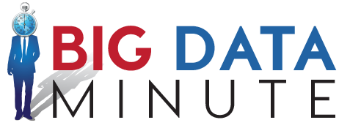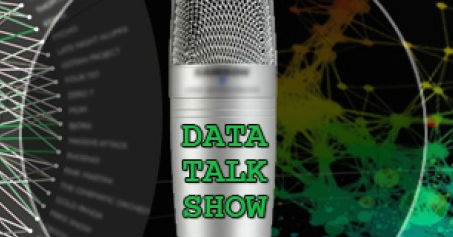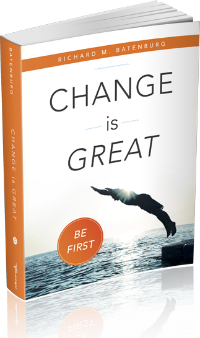
by Stephanie Rabinowotz | Dec 25, 2015 | Big Data, Customer Satisfaction
For as long as I can remember, my mother would be the first one out the door for Black Friday Sales and spend days at malls shopping for the best price on Christmas gifts. For most people this is a pretty typical example of how holiday shopping gets done.
With technology becoming increasingly more popular and almost everyone owning a smartphone, holiday shopping is going mobile. Google shows that over half of this year’s holiday shoppers planned to buy their gifts online. As Big Data continues to aid companies in advertising more accurately, the online shopping experience is easier and more accessible than ever before.
Now that online is becoming the preferred method of shopping, the mad rush in the stores is all but gone. People are saving time by conveniently shopping on their smartphones or from their home computer. But of course with an upside always comes a downside. The more people shop online, the harder mail deliverers have to work to get those gifts to their homes by Christmas.
Postal Service, UPS, and FedEx workers are putting in extra long hours of hard labor to ensure you a merry Christmas morning, so please be kind to your mail man and thank him or her for their sacrifice this holiday season!
Merry Christmas!

by Stephanie Rabinowotz | Dec 2, 2015 | Creating Competitive Advantage, Customer Satisfaction
The majority of adults indulge in the occasional glass of wine or beer, some more than others, but never the less liquor is a consistently successful industry. The issue is that there are so many players in the field that competition is constantly on the rise. With a continual stream of new products being released how can businesses set themselves apart to gain a competitive edge? How can businesses get more accurate and up to date feedback from their consumers?
When Big Data is used as an analytics tool it has proven to provide invaluable results. There is such a wide demographic of alcohol consumers that it becomes difficult to track consumer trends and acquire better marketing techniques. Big Data analytics can dig out the patterns in consumer trends and give the manufacturer feedback on where they need to improve to be more successful.
This insightful podcast reveals some great advice for beer and liquor vendors through using Big Data as a tool to better manage development as well as customer satisfaction!
Check out this podcast and learn how liquor vendors and manufacturers can take the lead against competition and up their annual sales!

by Stephanie Rabinowotz | Nov 27, 2015 | Customer Satisfaction
Most Americans live at a very busy pace, constantly rushing from one thing to another. This sense of urgency to do everything and be every where at once doesn’t leave much time for things like groceries. The online groceries business is one that is growing rapidly in the United States. It is extremely convenient for many busy families and working moms and dads to simply pick out what they would like online and have it delivered to their home the following day.
Big Data analytics is allowing companies to learn their customer’s habits and preferences to ensure the smoothest, easiest process possible. As consumers browse groceries on the website of the store of their choice, their activity is being monitored; allowing companies to learn about their consumer’s habits. What do they normally buy? At what time do they prefer their groceries be delivered? Are they flexible on their time of delivery or do they want it on a specific time?
These are all things food providers can learn about each unique customer and accommodate to individual needs. The more convenient an action is, the more likely people will use it, build up a preferred company and continue to use them for years to come. Big Data helps companies become a trusted resource for people, ensuring customer retention.

by Stephanie Rabinowotz | Nov 23, 2015 | Customer Satisfaction, Predictive Analytics
How will big data effect the black Friday sales this year? Well, big data has allowed the retail industry to know more about each individual customer than ever before. This means that stores will be able to market to us in unique ways that will prompt us to buys more. When we are thinking about buying something we want, all it takes is to see that item pop up on a screen or an email that says it has a slight discount and we are all over it. If that add popped up with some other item that we didn’t want, we wouldn’t think twice about it, but because the stores know what to advertise to us, we fall right into their trap.
So how many people will be lured in this black Friday? According to the National Retail Federation the average American spends $749 on holiday shopping. Black Friday is the biggest shopping day of the year and is where stores make the majority of their yearly sales. With Big Data heavily influencing the retail market it will be interesting to see if there are more online sales than in the stores this year compared to black Friday’s in the past.
Hopefully people will make use of big data and buy the items they want online rather than spending hours parked out in front of a retail department. Maybe this Big Data leap will move our generation to buy online with ease and actually spend black Friday, outside, enjoying their day off with loved ones. To learn more about how Big Data can predict spending habits, Check Out this great Article!

by Stephanie Rabinowotz | Nov 13, 2015 | Business Optimization, Customer Satisfaction
Pinterest is most commonly known as an app for DIY, stay at home moms who have it all together. Although there is some validity to that assumption, Pinterest is a wonderful tool anyone can use to find answers to almost any question. I personally use Pinterest like I would use Google; anything I need to know I look to Pinterest to find, because I trust its resources and know that the remedies have been tried and tested in real world scenarios.
With more and more people turning to Pinterest for information, it is becoming a popular site for business marketing. Companies can hide adds in pins that look like they came from the trusted neighborly mom. Pinterest is enhancing the ability for companies to market their products by enhancing their search engine through Big Data analytics. Pinterest has always utilized Big Data to recommended pins based on personal preference and habit, but not they are taking it to a whole other level.
Pinterest is using machine learning techniques to turn pictures into quantifiable data that can aid in more customized searches. Now when a user looks at a picture of an outfit and they particularly like the boots in that picture, they can click solely on the boots. By clicking this one section of the picture they will be redirected to thousands of other pins that feature those boots- who they were designed by, where can you by them, and customer reviews. This is an amazing new invention in technology and is not only going to make online shopping ten times more efficient and accessible, but help businesses market their products in real world scenarios.
People are much more likely to buy a pillow they see on a trendy couch in a well designed living room rather than that same pillow by itself up against a blank backdrop. Consumers want to see what the product is going to look like when they bring it home. This is also a great way for companies to allow their customers to market for them. When a girl pins a picture of her outfit, she will now be marketing for each piece of clothing she is displaying. Anyone can click on her sweater or hat and instant access where to purchase it. This is going to save companies a lot of money and time on marketing if they learn how to use Pinterest to their benefit.

by Stephanie Rabinowotz | Nov 9, 2015 | Customer Satisfaction, Data Science
This is a great article written by a colleague of mine about the effects big data is having on the insurance industry. With something as personal as insurance, customers want to feel that they are getting coverage that has been custom made specifically for their needs. No one wants to feel like they are over paying for a plan that they have been lumped into with complete strangers. See how big data is allowing insurance companies to treat their customers more individually and create coverage plans to fit any lifestyle!
Big Data in the Insurance Industry
Virtually every industry has found a way to put Big Data and data analytics to use. What are the industries that are utilizing the benefits of the data revolution? Education, manufacturing, retail, healthcare, telecommunications, and more. Really there is not an industry that can’t benefit from analytics.
Today, we will be talking about analytics in the insurance industry. Technology in this industry is booming. So what areas are being impacted the most?
Personalization
Similarly to many other industries, real-time data leads to a more personalized customer experience. Customers are more likely to feel as though they are being fairly treated and assessed, as individuals. They are no longer at the mercy of generalizations. This provides a more positive experience for them, making them more likely to remain loyal customers.
This also provides a more accurate risk assessment for the insurance companies. They, too are no longer at the mercy of generalizations.
Underwriting
Underwriters are also no longer at the mercy of generalizations. Through real-time data mining, they can better evaluate an individual, to match him or her with the best policy. They can also provide more accurate pricing based on the data assessments.
Fraud Risk
Unfortunately, fraudulent claims are rather common. But data mining and predictive analytics are starting to change that. Not only can they better evaluate the initial risk of fraud, but after a claim is made, they can track digital and social channels for evidence of fraudulent behavior.
Reducing Cancelation
Similarly to many other industries, advanced analytics greatly improve customer retention. In the insurance world, they leverage data to identify risk of impending cancellations. This way that can take preventative measures, and address unhappy customers.
They can even seek out more loyal consumers. Insurance companies are using predictive analytics to help them choose long-term clients. Because everyone knows that retaining customers is cheaper than getting new ones.
Relationships With Customers
This has clearly been brought up over and over again. And its an area where every single business or organization can improve; data analytics are the most effective way to improve customer experiences.
The insights from data analytics can be used to identify lifestyles, customer preferences, and characteristics. If employees that interact with customers have access to this data, then they can act on this. The data allows them to truly get to know the customers. By identifying with the customers, they are more interested in providing a positive experience for them. Simultaneously the customer really appreciates the personalized experience.












Recent Comments